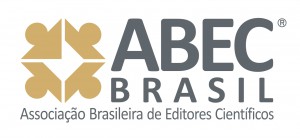Patient’ safety: challenges for nursing research and practice
DOI:
https://doi.org/10.5216/ree.v12i3.11885Abstract
doi: 10.5216/ree.v12i3.11885
Nowadays the concerns with quality of care and patient' safety in health care institutions have been globally evidenced. The movement for patient' safety began in the last decade of the twentieth century after the U.S. Institute of Medicine report publication which presented results of several studies revealing the critical situation of health care in this country. The data showed that approximately 44.000 to 98.000 from 33.6 million of hospital patients has died due to adverse events(1).
Since them the World Health Organization (WHO) has demonstrated its concern for patient' safety and has adopted this issue as high priority matter in the policy agenda for its countries members since the year of 2000. Last 2004, it was created the World Alliance for Safety Patients that aim to disseminate knowledge and found solutions. This alliance also has the goal of awareness and to gain political commitment for launching programs, generating alerts of systemic and technical aspects and conducting international campaigns that previously arrange the recommendations to ensure the safety of patients around the world(2).
It was published in May 2007 the nine solutions for adverse events prevention in the health care(3). The current global challenges includes "Clean care is safety care" aiming to ensure better hands hygienization of the health care professionals, "Safe Surgery saves lives" aiming to improve better surgical treatment safety in all health care settings, and "Addressing the antimicrobial resistance" as a priority and focus to the World Health Day 2011(4).
The main challenge of the experts in patient' safety that seek to reduce events in health care institutions has been the understanding, by the managers, that the cause of errors and adverse events is multifactorial and that health professionals are susceptible to commit adverse events when the technical and organizational processes are complex and poorly planned. The systems fail throughout the world and once the assistance is provided by humans there is the possibility of risk and harm promotion to patients, although what is really important now is that this reality is no longer ignored.
The understanding that systems fail and allow the professionals failures spreads out reaching patients causing them adverse events allows the hospital to review its processes, to study and strengthen their defense lines.
As a result f these global movements about this issue, scientific researches has been developed to identify and to understand the errors and adverse events, to adopt correctives actions and pro-actives, to analyze of the systemic fails and the cause factors and to establish strategies that ensure a safe practice, becoming better the quality of the health care and, consequently, offering a better patient' safety.
A severe mistake found has been the lack of information about occurred adverse events and about its causal factors, impeding the knowledge, evaluation and the debate about the consequences of these events to the professionals, patients and familiar. This lack jeopardizes patient' safety because hinder the manager's actions to the achievement of planning and development of organizational strategies to the adoption of safe practices, minimization of the events and improving health care, setting risk for patient's security.
Among the challenges for nursing when the subject are: the Patient' Safety Committee in health institutions composed by multidisciplinary team, seeking the development of a security culture inside or within these institutions and, the strengthening of a Nursing Network and Patient' Security (local, national and international) promoting rapid and effective communication of evidences, experiences and recommendations to ensure the patient' safety in the whole world.
Another challenge, not least, is the scientific researches development that aims to minimize the known distance between what we know in theory and what we apply in the practice (know-do gap). Nursing needs to remodel the reasoning on existing researches about safety today in a solid path toward safer care assistance in the future.
The researches on patient' safety should subsidize the decision-making and the management's intervention to modify the practice of care. The taken actions must generate results as reliable practices that make the difference in the safety of the patients, minimizing risks and changing the actual situation of the undesirable events.
REFERENCES
1. Kohn LT, Corrignan JM, Donaldson MS, editors. To err is human: building a safer health system. Washington: National Academy Press; 2001.
2. World Health Organization [Internet]. Geneva: World Health Organization (SW) [cited 2010 sep 29]. World Alliance for Patient Safety. Available from: http://www.who.int/patientsafety/worldalliance/en/.
3. World Health Organization [Internet]. Geneva: World Health Organization (SW) [cited 2010 sep 29]. WHO launches. Nine patient safety solutions. Solutions to prevent health care-related harm. Available from: http://www.who.int/mediacentre/news/releases/2007/pr22/en/index.html.
4. World Health Organization [Internet]. Geneva: World Health Organization (SW) [cited 2010 sep 29]. Campaings. WHO Patient Safety campaigns. Available from: http://www.who.int/patientsafety/campaigns/en/.














